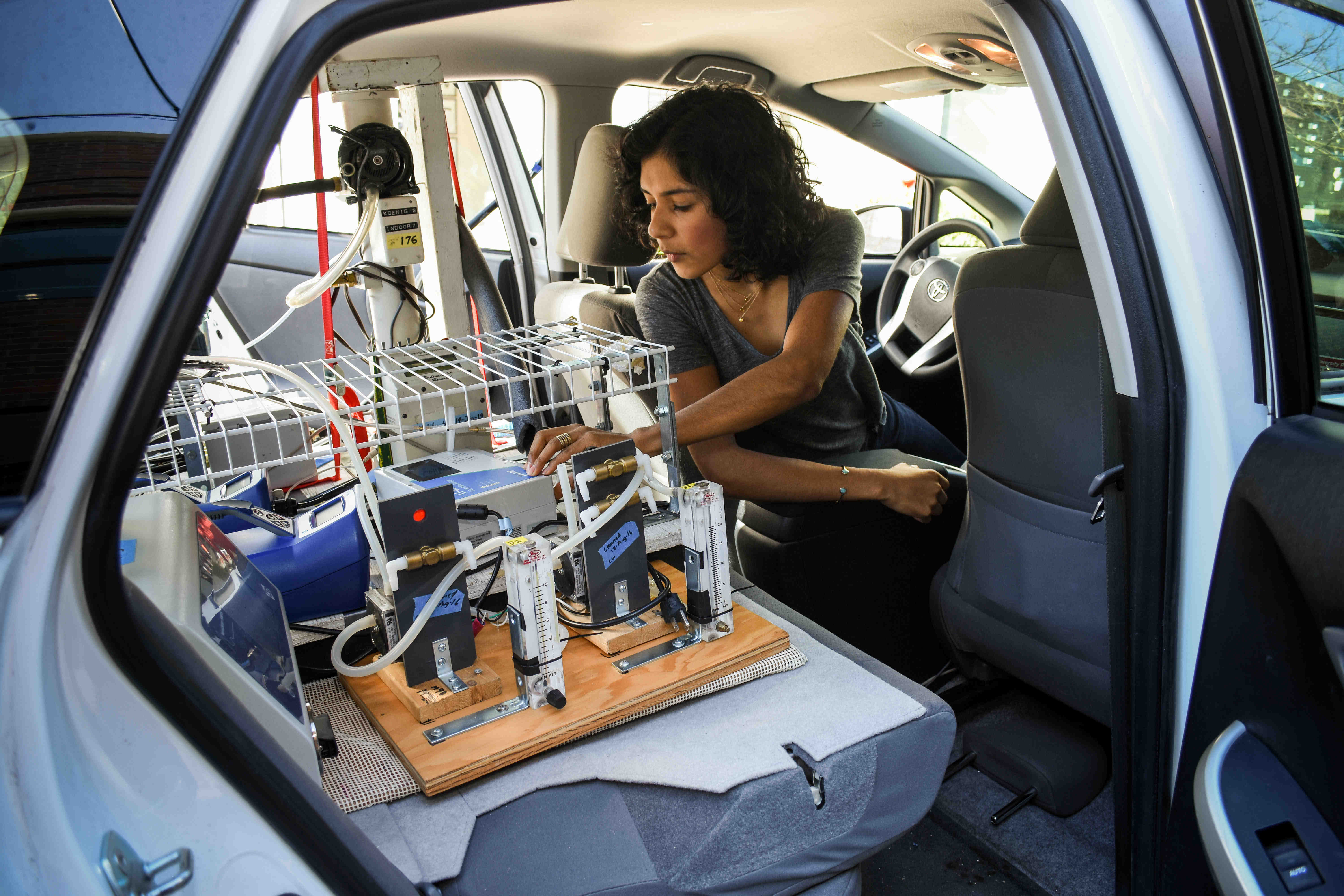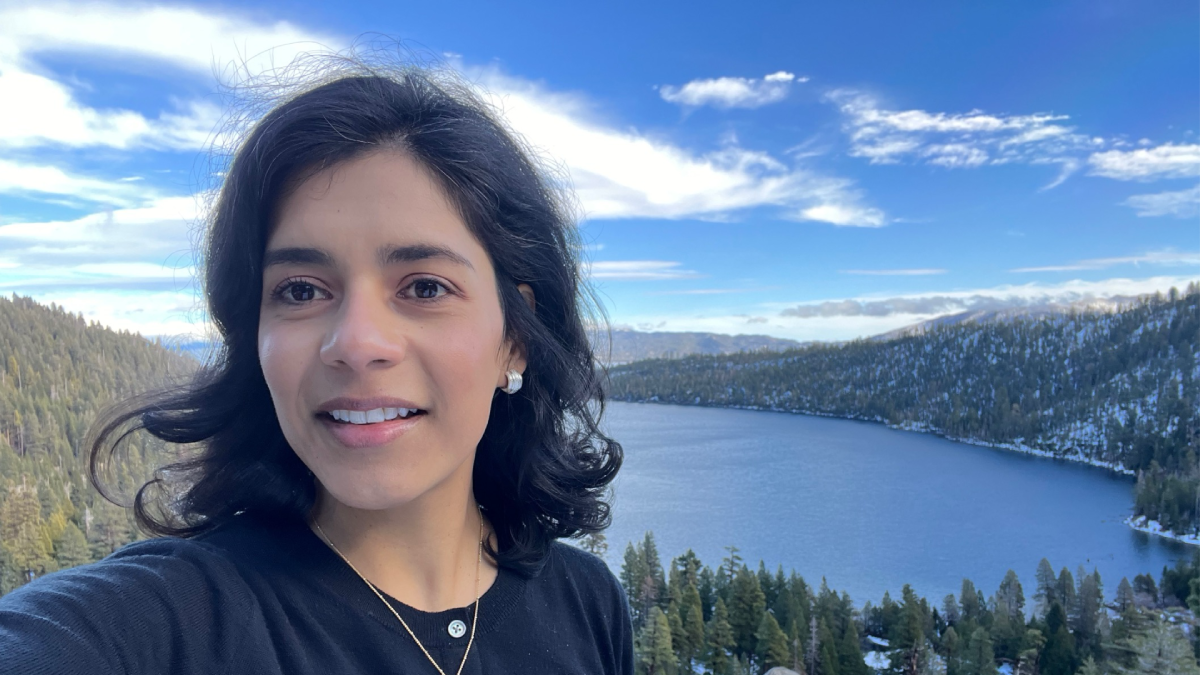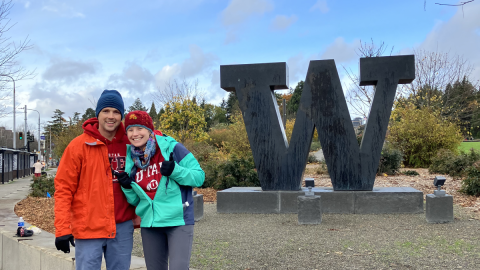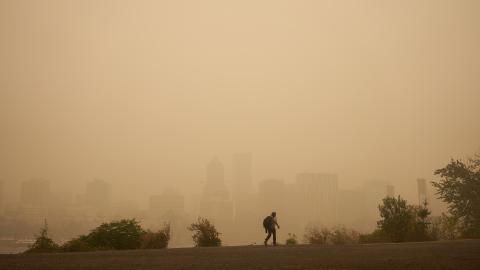Magali Blanco wants to understand how air pollution affects the brain. The challenge she faces is that it can be a slow process. For people who live next to a highway, it might take a decade or several to see evidence of the now-established association between exposure to traffic pollution and dementia.
To tackle these long timescales, Blanco, a new assistant professor in the UW Department of Environmental & Occupational Health Sciences (DEOHS), first develops models of how exposure to traffic pollution varies over a large city like Seattle. Then she studies how these exposures might be linked with the onset of dementia for residents in the area, working with data from a decades-long study of brain health.

“Air pollution impacts everyone, regardless of where you live, and especially if you live in an urban core,” she said. “Even though sometimes the effects are subtle, it affects so many people that at the total population level it can be really impactful.”
Finding environmental health and big data
Blanco got her start researching environmental health during a post-college internship at Oregon Health & Science University. She designed bilingual trainings for farmworkers to help limit their exposure to pesticides, and collected data about their health and safety in the field.
She built on that work during her MS in Occupational and Environmental Exposure Science at DEOHS, where she tested low-cost monitors to measure how pesticides drift, carried by the wind, when they are sprayed on crops.
That inspired her to continue using big data to answer big questions about air pollution during her PhD and postdoctoral research in DEOHS with Professor Lianne Sheppard. Blanco designed a mobile monitoring campaign to gather air pollution data around Seattle using a car outfitted with monitoring instruments.
Her work produced high-resolution exposure models of ultrafine particles, which scientists think may particularly influence brain health because they are small enough to directly enter the brain.
As an assistant professor in DEOHS, Blanco plans to extend her models over a timescale of decades, and also investigate how mixtures of pollutants might lead to dementia and Alzheimer’s disease.
.jpg)
Learning from 1,000 brains
“How does air pollution impact your brain so that, later on, you have these symptoms of cognitive deficit?” Blanco said. “Are there markers that can indicate what is actually happening?”
To answer these questions, she is working with a Seattle-based study called Adult Changes in Thought. Since it began in 1994, over 5,700 people have participated in the study.
The study is special because it aims to represent the whole community. Those residing in the greater Seattle area can enroll at age 65 or older if they are dementia free, and their cognitive function and other indices are surveyed over time.
So far, over 1,000 former study participants have donated their brains after death. In addition to looking at the incidence of dementia and residential history among the cohort, Blanco is working on analyzing measures of brain health derived from those samples, including markers of Alzheimer’s disease, vascular health, and other factors.
A returning Husky
Blanco is thrilled to return to DEOHS as a faculty member, particularly because of the department’s strong history of air pollution research. That includes an invaluable data team to help with models for assessing air pollution exposure in the lab of Professor Joel Kaufman.
She also values her collaborations across the UW, including in the Departments of Epidemiology and Biostatistics and the Data Science program. And she is looking forward to finding new collaborators at the UW, particularly those working in aging health research.
After spending years focusing primarily on research, Blanco is also excited to be teaching and to “be more active and a part of all the things that happen in the department.” This fall, she is co-teaching a field-trip-based class on occupational exposures with Teaching Professor Martin Cohen.
“It should be fun to go out into the field,” she said. “In our department, many classes are fairly small, and you end up working with really interesting students.”




